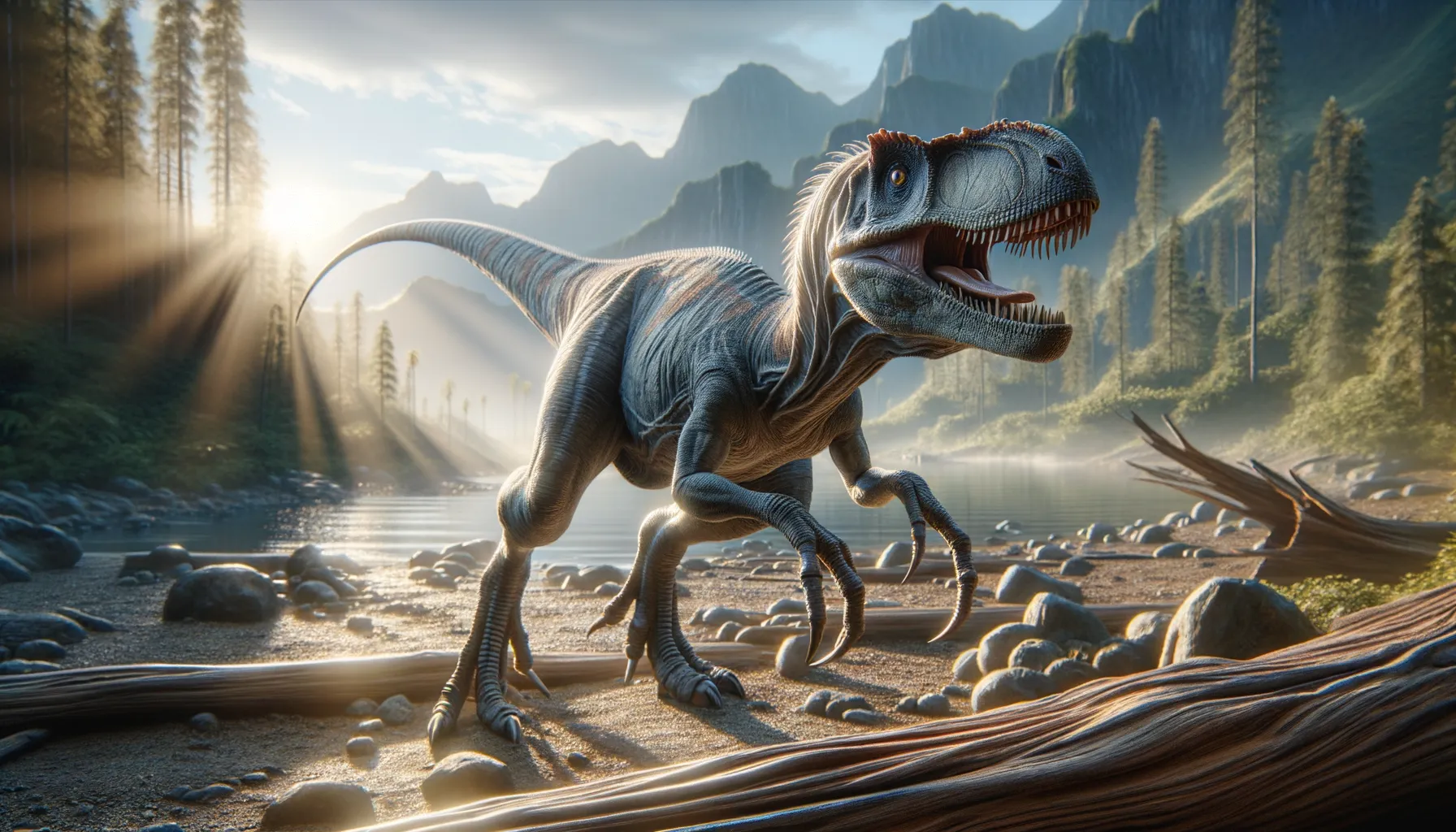
Acheroraptor
The sleek predator of ancient landscapes.
Period
Cretaceous
Length
About 3 meters long from nose to tail.
Height
Approximately 0.9 meters tall at the hip.
Weight
Approximately 40 kilograms.
Acheroraptor was a fast, two-legged predator from the late Cretaceous period. It had a sleek body, sharp claws, and a mouth full of sharp teeth, which made it an effective hunter. This dinosaur was part of the dromaeosaurid family, closely related to the famous Velociraptor. Acheroraptor lived in what is now North America, sharing its environment with other well-known dinosaurs like Tyrannosaurus rex and Triceratops.
Diet
Acheroraptor was carnivorous, primarily eating small mammals, reptiles, and possibly birds. Its sharp teeth and claws made it an adept hunter, capable of catching quick-moving prey.
Hunting
This dinosaur likely relied on stealth and speed to catch its prey. It may have hunted alone or in small packs, using its claws as tools for grasping and holding onto its meals.
Environmental challenges
Living in the late Cretaceous meant facing diverse climates and competition from larger predators like the Tyrannosaurus rex. Acheroraptor had to be adaptable to changing environments, which could shift from cooler to warmer periods as well as variations in plant life affecting the availability of smaller prey. Additionally, periodic natural disasters, like volcanic activity or shifting sea levels, posed challenges to their survival.
Speed
It was agile and likely swift, aiding in hunting.
Lifespan
Estimated to live around 15 to 20 years.
First discovery
Discovered in the Hell Creek Formation, Montana.
Fun Facts
- The Acheroraptor is named after the Acheron River from Greek mythology, which means 'River of Woe'.
- Acheroraptor lived about 66 million years ago during the late Cretaceous period.
- It is believed to have been a small, agile predator, similar to the Velociraptor.
- Acheroraptor had a set of sharp, curved teeth ideal for slicing through the flesh of its prey.
- Fossils of Acheroraptor were discovered in the famous Hell Creek Formation in Montana, USA.
- With its keen senses, it likely hunted small mammals, reptiles, and possibly young or wounded dinosaurs.
- Despite its fierce appearance, Acheroraptor was not much bigger than a modern turkey.
Growth and Development
Acheroraptor likely hatched from eggs and grew rapidly during the first few years of life. Juveniles were probably more vulnerable to predators, requiring speed and agility as a means of escape. Growth rates would have slowed once maturity was reached, allowing these dinosaurs to focus more on hunting and reproduction. Its development was influenced by the availability of food and climatic conditions, impacting its survival and proliferation.
Habitat
Acheroraptor lived in what is now North America, primarily in forested areas or open plains where its prey was abundant. The Hell Creek Formation, where it was discovered, indicates a rich ecosystem with rivers and diverse plant life. This environment offered ample food resources and hiding spots for both hunting and avoiding larger predators. Occasional droughts or flooding could change the landscape, influencing the distribution of species within its habitat.
Interaction with other species
Acheroraptor shared its environment with various dinosaurs, including larger carnivores and herbivores. It might have had to compete with other smaller predators for food resources. Interaction with non-dinosaur species like mammals and early birds often involved predation as a source of sustenance. It likely avoided direct confrontations with larger dinosaurs, opting instead for more manageable prey within its reach.
Natural lifespan
Acheroraptor's natural lifespan likely ranged from 15 to 20 years.
Reproduction
Acheroraptor reproduced by laying eggs, similar to other theropod dinosaurs. Nesting sites may have been hidden among foliage or in more protected areas to avoid predators. Parental care was possible, though it's uncertain how much time parents invested in the young after hatching. Clutch sizes would have varied, affecting reproductive success and future population sizes.
Social behaviour
Acheroraptor may have exhibited solitary hunting behavior but could have interacted with others of its kind for mating or during certain predation situations. Group behavior would have been beneficial when facing larger predators or to capture larger prey, but the extent of such social interactions remains speculative.
Fossil locations
Acheroraptor fossils have been primarily found in the Hell Creek Formation, Montana. This area is known for a rich deposit of late Cretaceous dinosaur remains. Its fossil distribution provides insight into its historical geographical range.
